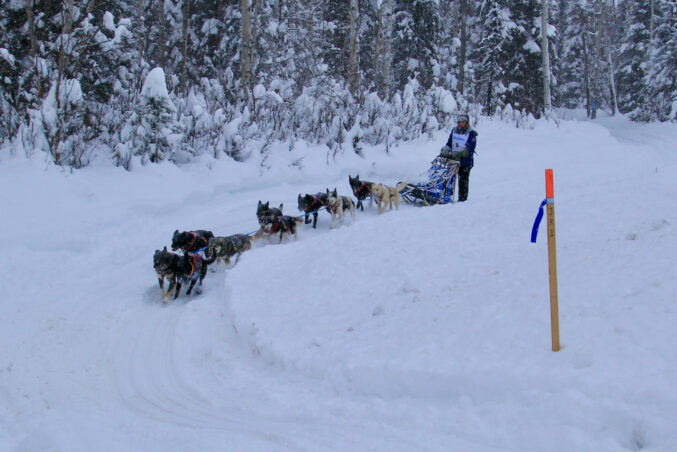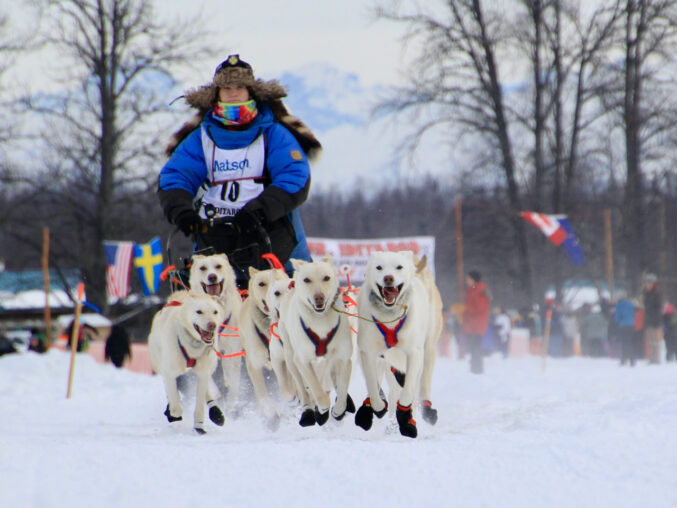I love how numbers can tell stories of the world around us. One of my challenges as a 2024 finalist was to write a post with lesson ideas using math. This was the night of the Anchorage Musher Banquet, and I found myself poring over the 2023 Musher Stats page in the Iditarod program. I kept wondering, is there a certain number of times a musher races in the Iditarod before winning? Obviously, there are extenuating factors, such as what a musher’s goals are, the health of their dogs, and weather. But I was pleasantly vindicated when a faint line of dots appeared on the graph I hastily drew in my notebook, showing that there was a trend in the answer to my question.
This month is all about “Musher Campouts,” as Blair Braverman describes in her book Dogs on the Trail. Planning for any kind of campout, much less one with ten or more dogs, requires a fair bit of math! October is a great time to revisit the potential mathematics has for telling the stories of patterns, trends, and predictions around us. Of course, the Iditarod is a world-class sporting event, so math plays an important role in the analysis of statistics, speed, and timing.
This month’s lesson focuses on the Jr. Iditarod! Emily Dinges, Jr. Iditarod coordinator, describes it as the ultimate musher campout. When the mushers, ages 14-17, reach the outer point of their trail from Knik Lake to Yentna Station, the tradition is that whoever reaches the checkpoint first builds a campfire—after first taking care of their dog team. Stories, snacks, and memories are shared among the teens over the 10-hour layover.
One of the books on Iditarod Edu’s reading list is Iditarod Dream by Ted Wood. It tells the story of Dusty Whittimore, a teen who won the Jr. Iditarod twice. The photos accompanying the text are splendid and informative. I highly recommend adding this book to your classroom if you have not already. This book helps students relate to the math they will practice in this lesson.
In this month’s lesson, students from Kinder through 6th grade will solve story problems about the Jr. Iditarod. A Jr. Iditarod checkpoint tracker is included, along with resources to help students write their own story problems. Students will get to plan their own musher campout with a team of friends.
A final note–several of my students wrote story problems appearing in this lesson, and they are credited with their work.
Here is the complete lesson plan! What stories do your students investigate using math? Email me at emailtheteacher@iditarod.com.




